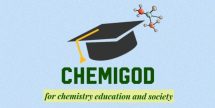Investigatory Project for Class 11 and 12 Chemistry and Biology CBSE Students
Aim:- To investigate the chloride content in milk.
Apparatus:- Conical flask, burette, pipettes etc.
Reagents:- Ferric alum indicator: In 10% nitric acid, prepared by boiling excess of iron alum, cooling and filtering; Potassium thiocyanate: 0.05 N, (standardized against standard potassium chloride.), Silver nitrate: Approximately 0.05 N, Concentrated nitric acid.
Theory:- The normal range of chloride content
in cow’s milk is 80-140 mg/100 ml and
in buffalo’s milk is 60-70 mg/100 ml.
Determination of chloride content in milk can be used as a means of detecting abnormal milk such as infected udders, colostrum and late lactation milk which are usually high in chloride content.
Values of chloride content higher than 0.14% (140 mg/ 100 ml) in milk indicate the presence of abnormal milk.
Estimation of chloride content in milk is based on argentometric titration (Volhard’s method). In this method a known excess quantity of standard AgNO3 solution is added to the known volume of milk. The chloride present in milk reacts with silver nitrate and forms white precipitate of insoluble silver chloride. The unused AgNO3 (which is present in excess) is back titrated against standard potassium thiocyanate (KCNS) in presence of concentrated HNO3 using ferric alum as indicator. End point of titration is the first appearance of orange-red colour which persists for at least 15 seconds. End point of titration is not clearly visible in sample titration with potassium thiocyanate (KCNS). HNO3 is added to the system to dissolve the interfering casein and also to make the solution acidic so as to keep the AgCI in the precipitated form.
Reactions:-
CI- + Ag+ —–》 AgCI
(until all Cl- is complexed)
Ag+ + SCN- ——-》 AgSCN
(to quantitate silver not complexed with chloride)
SCN- + Fe3+ —–》 FeSCN
(orange-red when there is any SCN- not complexed to Ag+)
Preparation of reagents:-
A. Potassium thiocyanate -0.05 N Solution
w = M x GMM X V ( in ml)/ 1000 w = N x GEM X V ( in ml)/ 1000
w = 0.05 N x 97 g mol- X 100 ml / 1000 = 0.485 g
Dissolve 0.485 g of in water present in 100 ml volumetric flask and make up with water up to the ring.
B. Silver nitrate: Approximately 0.05 N Solution
w = M x GMM X V ( in ml)/ 1000 w = N x GEM X V ( in ml)/ 1000
w = 0.05 N x 170 g mol- X 100 ml / 1000 = 0.85 g
Dissolve 0.85 g of in water present in 100 ml volumetric flask and make up with water up to the ring.
Procedure:-
Take 10 g of the sample, accurately weighed in a 250 ml of Erlenmeyer flask.
To this add 10 ml of silver nitrate solution and 10 ml of concentrated nitric acid. Shake the content.
Digest the mixture until reddish brown fumes are evolved.
Cool the flask and add 1 ml of saturated iron alum solution.
Determine the excess of silver nitrate by titrating with the standard potassium thiocyanate until the first appearance of an orange red colour that persists for 10 seconds.
In the same manner, determine the volume of the standard thiocyanate solution equivalent to 10 ml of silver nitrate using the same volumes of reagents and water.
| S.N. | Sample of milk | X = volume in ml of the standard potassium thiocyanate solution required by the blank | Y = volume in ml of the standard potassium thiocyanate solution required by the sample | {X- Y } | Chloride, % by weight = 0.01773 (Y – X) | Chloride as sodium chloride, % by weight = 0.02923 (Y- X) |
| 1 | Cow milk of healthy cow | |||||
| 2 | Cow milk with infected udders | |||||
| 3 | Cow milk with colostrum | |||||
| 4 | Cow milk with late lactation | |||||
| 5 | Buffalo milk of healthy Buffalo | |||||
| 6 | Cow milk with infected udders | |||||
| 7 | Cow milk with colostrum | |||||
| 8 | Cow milk with late lactation |
Calculations:-
Chloride, % by weight = 0.01773 (Y – X)
Chloride as sodium chloride, % by weight = 0.02923 (Y- X) Where,
X = volume in ml of the standard potassium thiocyanate solution required by the blank,
and
Y = volume in ml of the standard potassium thiocyanate solution required by the sample.
Resut:-The samples of milk of cow/ Buffalo with infected udders, colostrum and late lactation cases have more chloride content.
